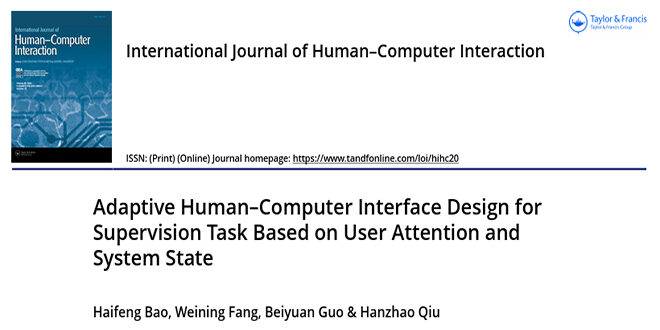The rapid development of computer information technology has increased the complexity of the human–computer interface, especially in supervision tasks. It is difficult for users to pay attention to multiple information and make decisions in real-time, which needs higher requirements for the design of a human–computer interface. The research designs a novel adaptive human–computer interface using the Adaptive Interface Design (AID) framework: Combining the real-time user attention and system state as the input layer of AID; Building a hybrid entropy attention allocation model as the decision layer of AID; Adjusting the real-time saliency of the information in the interface as the output layer of AID. The comparative experiments in supervision tasks are conducted to test the performance of the users in the designed adaptive interface and traditional interface.The results show that the designed adaptive human–computer interface can effectively improve the supervisors’ performance and reduce the risk of system failure.
Haifeng Bao, Weining Fang, Beiyuan Guo, and Hanzhao Qiu.Adaptive Human–Computer Interface Design for Supervision Task Based on User Attention and System State. INTERNATIONAL JOURNAL OF HUMAN–COMPUTER INTERACTION.2023.8.https://doi.org/10.1080/10447318.2023.2228070
 复杂系统人因与工效学研究所
复杂系统人因与工效学研究所

